Titanic (1997): A Timeless Epic of Love and Tragedy
introduction:
When Titanic sailed into theaters in 1997, it didn’t just capture hearts—it became a cultural juggernaut. Directed by James Cameron, this romantic epic blended historical drama with a heart-wrenching love story, grossing over $2.2 billion worldwide (unadjusted) and holding the title of highest-grossing film for over a decade. Starring Leonardo DiCaprio and Kate Winslet as star-crossed lovers Jack and Rose, Titanic is more than a movie about a sinking ship—it’s a cinematic masterpiece that explores love, class, sacrifice, and human resilience. In this 3,000-word deep dive, we’ll explore why Titanic remains a beloved classic, its impact on pop culture, and why it’s still a must-watch in 2025. Let’s set sail into the legacy of this iconic film and uncover what makes it timeless.
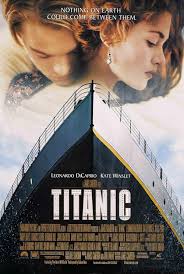
The Making of Titanic: James Cameron’s Grand Vision
James Cameron, known for his ambitious projects like Terminator 2, took on his most daring challenge with Titanic. Fascinated by the real-life tragedy of the RMS Titanic, which sank in 1912 after hitting an iceberg, Cameron aimed to recreate the disaster with unprecedented realism while weaving a fictional romance at its core. The production was a gamble—its $200 million budget was astronomical for the time, and delays sparked rumors of a flop. Yet Cameron’s meticulous attention to detail, from historical accuracy to groundbreaking effects, paid off spectacularly.
The film alternates between 1996, where treasure hunter Brock Lovett (Bill Paxton) searches the Titanic wreck, and 1912, where young lovers Jack Dawson and Rose DeWitt Bukater meet aboard the ill-fated ship. Cameron’s blend of historical fact and emotional fiction created a universal story that resonated across generations, earning 11 Academy Awards, including Best Picture and Best Director.
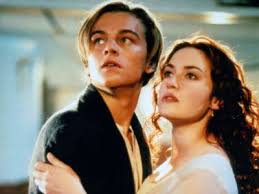
Why Titanic Endures: A Perfect Storm of Emotion and Spectacle
Unforgettable Love Story
At its heart, Titanic is about Jack and Rose, two souls from opposite worlds who find love against all odds. Leonardo DiCaprio’s Jack, a free-spirited artist from steerage, and Kate Winslet’s Rose, a first-class heiress trapped in a loveless engagement, deliver performances that are raw and electric. Their romance, from the “I’m flying” scene at the ship’s bow to their desperate fight for survival, is both passionate and tragic. The chemistry between DiCaprio and Winslet feels authentic, making their love story one of cinema’s most iconic.
The film’s emotional depth lies in its exploration of freedom and self-discovery. Rose’s journey from a stifled aristocrat to a woman who embraces life mirrors the broader theme of breaking free from societal constraints. Jack’s selfless love inspires her, and their story resonates because it captures the fleeting, transformative power of connection.
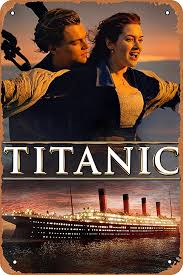
Historical Authenticity
Cameron’s obsession with the Titanic’s history shines through in every frame. The ship’s opulent interiors—grand staircases, dining saloons, and first-class cabins—were recreated with meticulous detail, based on archival photos and survivor accounts. Real historical figures, like Margaret “Molly” Brown (Kathy Bates) and Captain Edward Smith (Bernard Hill), add authenticity. The sinking sequence, blending practical sets with CGI, is harrowing, capturing the chaos and human toll of the disaster. Cameron consulted historians and deep-sea explorers to ensure accuracy, making Titanic both a spectacle and a tribute to the 1,500 lives lost.
Visual and Technical Mastery
Titanic pushed the boundaries of 1990s filmmaking. Cameron built a near-full-scale replica of the ship in Mexico, complete with a massive water tank for sinking scenes. The combination of practical effects (like tilting sets to simulate the ship’s angle) and early CGI (for wide shots of the ocean and wreck) was groundbreaking. The film’s 3D re-release in 2012 enhanced its immersive quality, proving its visuals hold up decades later. Titanic won Oscars for Best Visual Effects, Best Cinematography, and Best Art Direction, cementing its technical legacy.
Iconic Soundtrack
James Horner’s score, with its haunting melodies and Celtic influences, is inseparable from Titanic’s emotional impact. Celine Dion’s “My Heart Will Go On” became a global anthem, topping charts and winning an Oscar for Best Original Song. The music elevates every scene, from romantic highs to tragic lows, making it one of the most recognizable soundtracks in film history.
Breaking Down the Plot: A Voyage of Love and Loss
Titanic weaves a dual narrative, blending a modern-day framing device with the 1912 tragedy. Here’s a spoiler-light overview:
Act 1: Aboard the “Unsinkable” Ship
In 1996, Brock Lovett’s treasure-hunting team explores the Titanic wreck, seeking a diamond called the Heart of the Ocean. Elderly Rose (Gloria Stuart) shares her story, flashing back to 1912. Young Rose boards the Titanic, engaged to the controlling Cal Hockley (Billy Zane). She meets Jack, a third-class passenger who wins his ticket in a poker game. Their chance encounter sparks a connection, defying class barriers.
Act 2: Love Amid Luxury
As the Titanic sails, Jack and Rose’s romance blossoms. Iconic scenes—like Jack sketching Rose wearing the Heart of the Ocean or their dance in steerage—highlight their chemistry. Meanwhile, tensions rise with Cal and Rose’s mother, Ruth (Frances Fisher), who pressure her to uphold her social status. The film interweaves moments of joy with ominous hints of the impending disaster, building suspense.
Act 3: The Sinking and Aftermath
When the Titanic hits an iceberg, chaos erupts. The sinking sequence is a masterclass in tension, showing the ship’s descent into icy waters and the desperate scramble for lifeboats. Jack and Rose fight to survive, facing impossible choices. The modern-day framing ties up Rose’s story, delivering a poignant reflection on love, loss, and living fully.
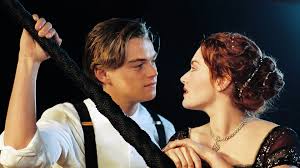
The Cast: A Stellar Ensemble
Titanic’s cast brings its story to life with unforgettable performances:
- Leonardo DiCaprio as Jack Dawson: DiCaprio’s charm and vulnerability make Jack a timeless romantic hero, catapulting him to stardom.
- Kate Winslet as Rose DeWitt Bukater: Winslet’s nuanced portrayal captures Rose’s transformation from despair to defiance, earning her an Oscar nomination.
- Billy Zane as Cal Hockley: Zane’s smarmy villainy makes Cal a perfect foil, adding tension to the love story.
- Gloria Stuart as Old Rose: Stuart’s soulful performance frames the story, earning her an Oscar nod at age 87.
- Supporting Cast: Kathy Bates (Molly Brown), Bernard Hill (Captain Smith), and Victor Garber (ship designer Thomas Andrews) add depth and humanity to the historical narrative.
The Technology Behind Titanic
Practical Effects
Cameron’s team built a 775-foot replica of the Titanic, capable of tilting to simulate the sinking. Massive water tanks dumped millions of gallons to recreate flooding scenes, with actors enduring freezing conditions for authenticity. These practical effects grounded the film’s spectacle, making the disaster feel visceral.
CGI Innovation
While less reliant on CGI than Cameron’s later films, Titanic used digital effects for wide shots of the ship and ocean. The sinking sequence blended CGI with practical sets, creating seamless chaos. The film’s visual innovation paved the way for Cameron’s work on Avatar.
Cinematography and Sound
Cinematographer Russell Carpenter’s work earned an Oscar, capturing the ship’s grandeur and the sinking’s horror. The sound design—creaking metal, rushing water, and panicked screams—immerses viewers in the tragedy. Horner’s score and Dion’s ballad amplify the emotional stakes.
Themes and Symbolism: A Deeper Look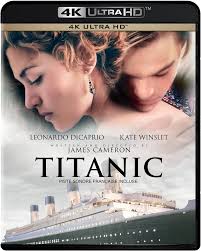
Love and Sacrifice
Jack and Rose’s romance is a testament to love’s power to transcend class and circumstance. Their sacrifices highlight the selflessness that defines true connection, making their story universally relatable.
Class Divide
Titanic critiques the rigid class structure of 1912, with first-class passengers prioritized for lifeboats while steerage passengers are locked below. Rose’s rebellion against her privileged world underscores themes of freedom and equality.
Human Hubris
The Titanic was deemed “unsinkable,” a symbol of human arrogance. The film explores how overconfidence and negligence led to tragedy, a warning that resonates in modern discussions of technology and environmental impact.
Survival and Resilience
Rose’s survival, both physical and emotional, embodies resilience. Her journey reflects the strength to overcome loss and embrace life, a message that inspires audiences.
Titanic’s Legacy and Influence
Box Office Triumph
Titanic grossed $2.2 billion (unadjusted), a record until Avatar surpassed it. Its 15-week reign at #1 in the U.S. box office is unmatched, driven by repeat viewings and word-of-mouth. Re-releases, including the 2012 3D version, have kept it relevant.
Cultural Phenomenon
Titanic became a cultural touchstone, with “My Heart Will Go On” dominating radio and the “I’m flying” scene inspiring parodies and memes. The film sparked a renewed fascination with the Titanic, boosting tourism to museums and exhibitions. Its romance became a blueprint for love stories in films like The Notebook.
Impact on Filmmaking
Titanic proved that epic budgets could yield epic returns, influencing the rise of blockbuster spectacles. Its blend of romance, drama, and disaster set a template for films like Pearl Harbor and The Revenant. Cameron’s technical innovations also shaped the future of visual effects.
Why Titanic Still Resonates in 2025
In 2025, Titanic remains a cinematic treasure for several reasons:
- Timeless Romance: Jack and Rose’s love story transcends eras, captivating new generations.
- Historical Relevance: The Titanic’s tragedy remains a cautionary tale about hubris and preparedness.
- Emotional Power: Its blend of joy and heartbreak ensures it hits hard, whether on first watch or tenth.
- Cultural Staying Power: From memes to references in shows like The Simpsons, Titanic is embedded in pop culture.
SEO-Optimized Insights for Movie Fans
For those searching for Titanic (1997) details, here’s a quick FAQ to boost engagement:
Is Titanic Worth Watching in 2025?
Yes! Its romance, drama, and visuals remain captivating, especially in 4K or 3D.
Where Can I Watch Titanic?
Stream it on Disney+, Paramount+, or Blu-ray. Visit Flftri.site for streaming updates.
Do I Need Historical Knowledge to Enjoy Titanic?
No, the film’s fictional romance and clear storytelling make it accessible, though history buffs will appreciate its accuracy.
Why Is Titanic’s Soundtrack So Iconic?
Celine Dion’s “My Heart Will Go On” and Horner’s score amplify the film’s emotional depth, making them unforgettable.
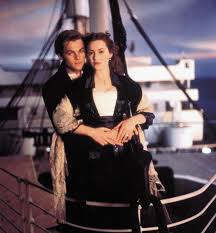
Fun Facts About Titanic
- Real Wreck Footage: Cameron dove to the Titanic wreck 12 times, using footage in the film.
- Record-Breaking Oscars: It tied Ben-Hur for most Oscars won (11) and was nominated for 14.
- DiCaprio’s Rise: The film made Leonardo DiCaprio a global heartthrob at age 22.
- Set Challenges: The sinking scenes required actors to endure freezing water for hours.
Criticisms and Counterpoints
Titanic isn’t without flaws:
- Lengthy Runtime: At 3 hours and 14 minutes, some find it long, but the pacing keeps it engaging.
- Historical Liberties: Purists note inaccuracies (e.g., the portrayal of First Officer Murdoch), though Cameron prioritized drama.
- Sentimentality: Some call it overly sentimental, but its emotional honesty resonates with most viewers.
How Titanic Fits into Flftri’s Mission
At Flftri, we’re passionate about films that spark emotion and conversation. Titanic embodies this, blending romance, tragedy, and historical drama into a timeless story. Our reviews and analyses aim to deepen your appreciation for cinema, whether you’re a casual viewer or a film buff. Explore Flftri.site for more breakdowns, top-10 lists, and hidden gem recommendations.
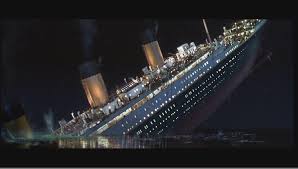
Conclusion: A Voyage That Never Fades
Titanic (1997) is more than a movie—it’s a cultural landmark that captures the beauty and tragedy of the human experience. James Cameron’s vision, paired with DiCaprio and Winslet’s electric performances, creates a story that resonates across decades. Whether you’re drawn to its romance, historical depth, or stunning visuals, Titanic offers an unforgettable journey. Sail into its legacy with Flftri.site, where we celebrate the best in cinema with passion and authenticity.
